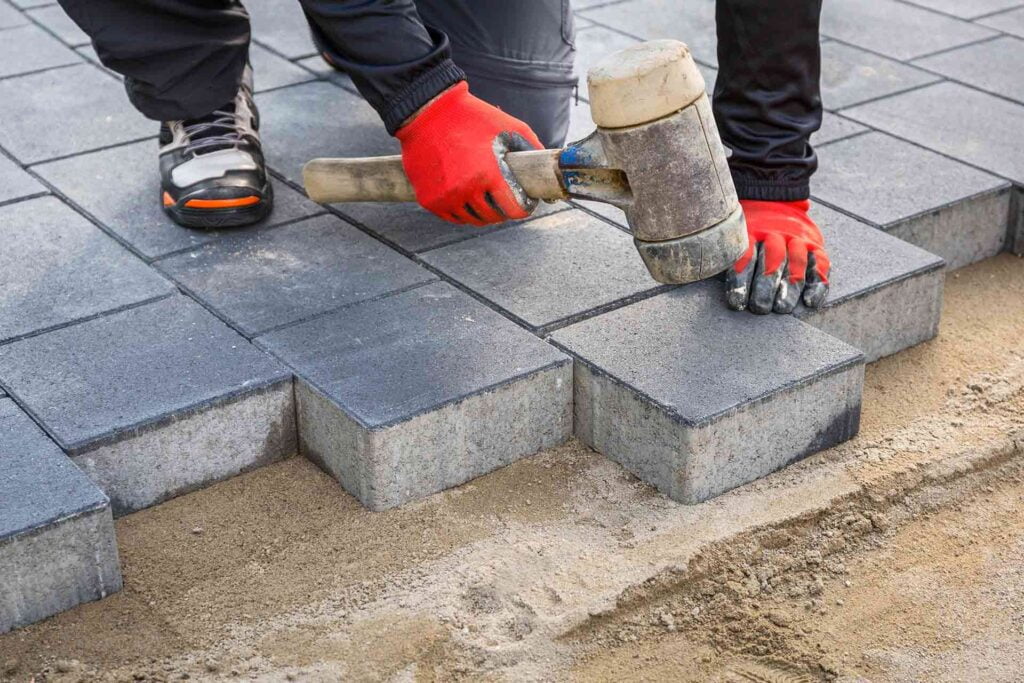Paver blocks are among the most popular hard landscaping surface options. You’ll see them on driveways, sidewalks, parking lots, malls, and residential areas. Block paving has been in use since ancient Roman times due to its adaptability, resilience, and elegance. It comes in various hues and textures that can match any building project. Our manual will elaborate on its applications, types, and how it measures up against other business flooring options.
What is Block Paving?
Block paving is a technique of constructing a durable surface by utilizing individual blocks instead of other substances like cement, tarmac or plaster. Placed manually in unique designs, block paving generates an aesthetically attractive layout and has ornamental applications in addition to its practical function.
What is it used for?
Block paving is a versatile and trendy option that can be incorporated into various modern settings, ranging from historic landmarks to contemporary urban landscapes. While it is frequently used in outdoor areas such as patios, driveways, sidewalks, and pedestrian zones, you can also find heavier paving blocks that can withstand the weight of vehicles. This makes it a perfect choice for places like HGV, container and dock loading bays, access roads, farm and stable areas, parking lots, and bus and bike lanes.
What is block paving made of?
Pavers are commonly crafted from either concrete. Made up of crushed rock, sand and cement, concrete pavers are highly robust and sturdy, making them perfect for most hard landscaping endeavors. They come in a vast array of patterns, dimensions and hues, ranging from the standard rectangular paver to a pyramid-shaped one. Concrete pavers can also have up to 50% reused material in their production, which makes them an eco-friendly option.
Difference between permeable and impermeable block paving
Permeable pavement is a crucial element of a successful Sustainable Drainage Systems (SuDS) solution. The pavement is produced with specifically crafted inconspicuous 5mm gaps, enabling water to directly flow through the joints to the subgrade beneath. The gaps are packed with pure, rigid, and sharp-edged joint grit measuring between 2mm to 5mm, which permits water to seep into the SuDS system below, while debris is trapped on the pavement’s surface, ensuring that the system remains uncontaminated.
The different patterns and colors
Block paving is highly sought-after due to its combination of aesthetics and durability. It provides a wide range of color options, including timeless hues like beige, brown, and gray, as well as more eye-catching shades such as blue, green, and pink. Block paving creates an immediate and long-lasting impression. Additionally, the paving’s appearance can be customized during installation, with popular patterns like herringbone, basketweave, or stretcher bond. Furthermore, block paving offers limitless design options since individual blocks are available in various sizes and thicknesses.
Pavers are among the most adaptable materials used in hard landscaping. Here are the key advantages and disadvantages to consider when selecting the appropriate option:
Pros
- Functional, durable, and resilient performance
- Highly robust with superior traction and slip-resistant features
- Outstanding aesthetic charm
- Can be arranged in various designs and arrangements, or to distinguish pedestrian and vehicular zones
- Resistant to frost
- Simple to remove for maintenance or utility access and can be restored without visible repair marks
- Produced in standard dimensions for effortless planning and design
Want to know more about block paving and how your driveway, garden, pathway of patio can be laid with block pavement, consult the paving experts at Classic Paving.

